GUILD STARFIRE I JET90: THE GUITAR.COM REVIEW
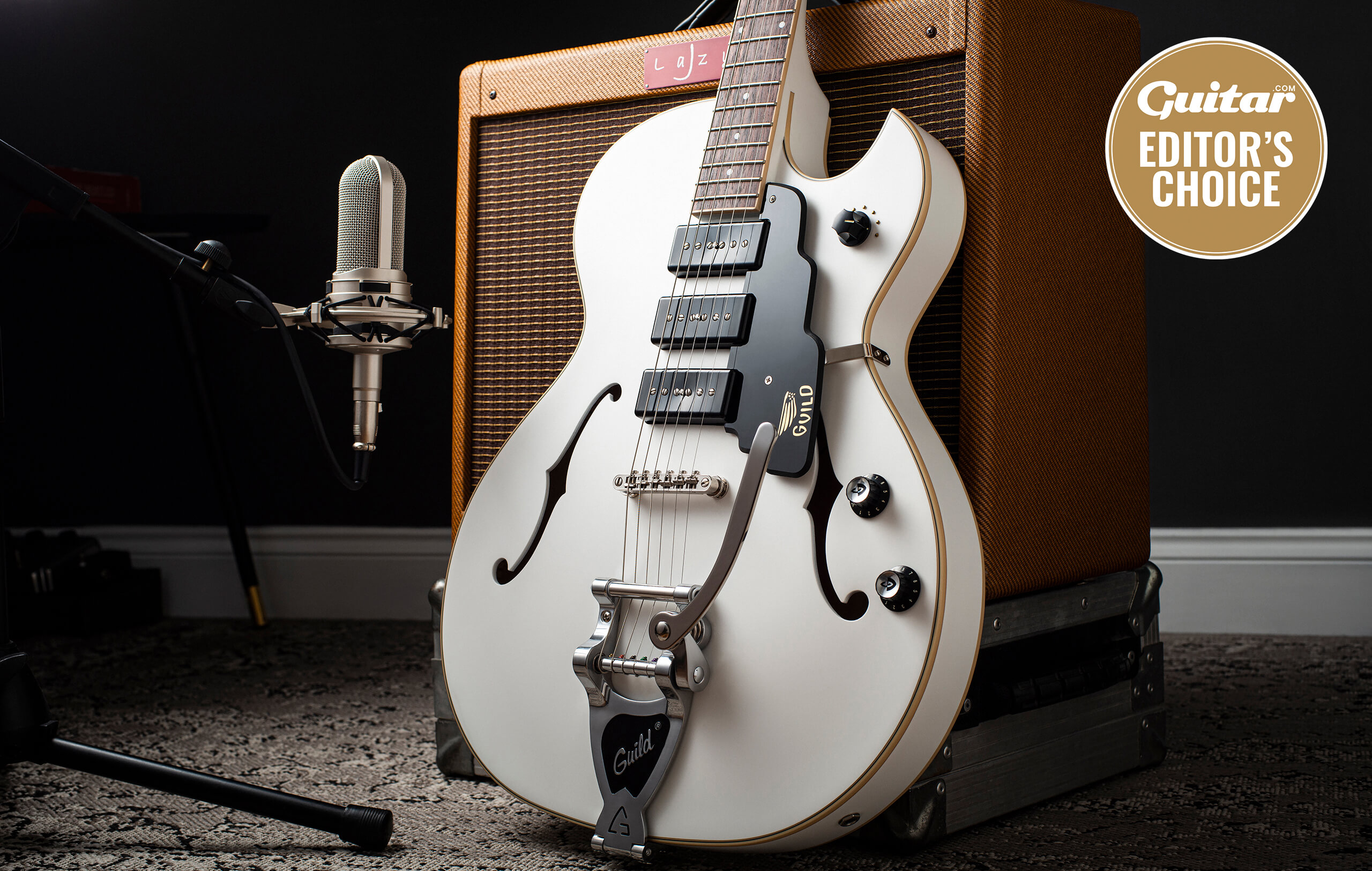
THE BIG REVIEW: GUILD STARFIRE I JET90
Fresh from Guild’s vintage-inspired Newark St. Collection, could this retro hot-rod be the leader of the pack?
Despite space-age model names such as Starfire and Jetstar, Guild’s Newark St. Collection has long been a destination for those with vintage inclinations and a down-to-earth budget. From hard-rockin’ solidbodies to hollowbody archtops, all the main food groups are accounted for within the range. Our review model combines the classic singlecut Starfire outline with a centre-block, a trio of Guild’s Franz P-90s and a Bigsby-style vibrato tailpiece.
Seen here in Satin White polyurethane, the Jet90 is certainly a looker, and the Satin Black and dark-backed Satin Gold incarnations are no less attractive. With a 16.5-inch lower bout and an elongated Firebird-style six-in-line headstock outline first used by Guild back in the 1960s, it’s an imposing instrument that makes a lot more sense on our 6’2” frame than it might on that of a shorter player.
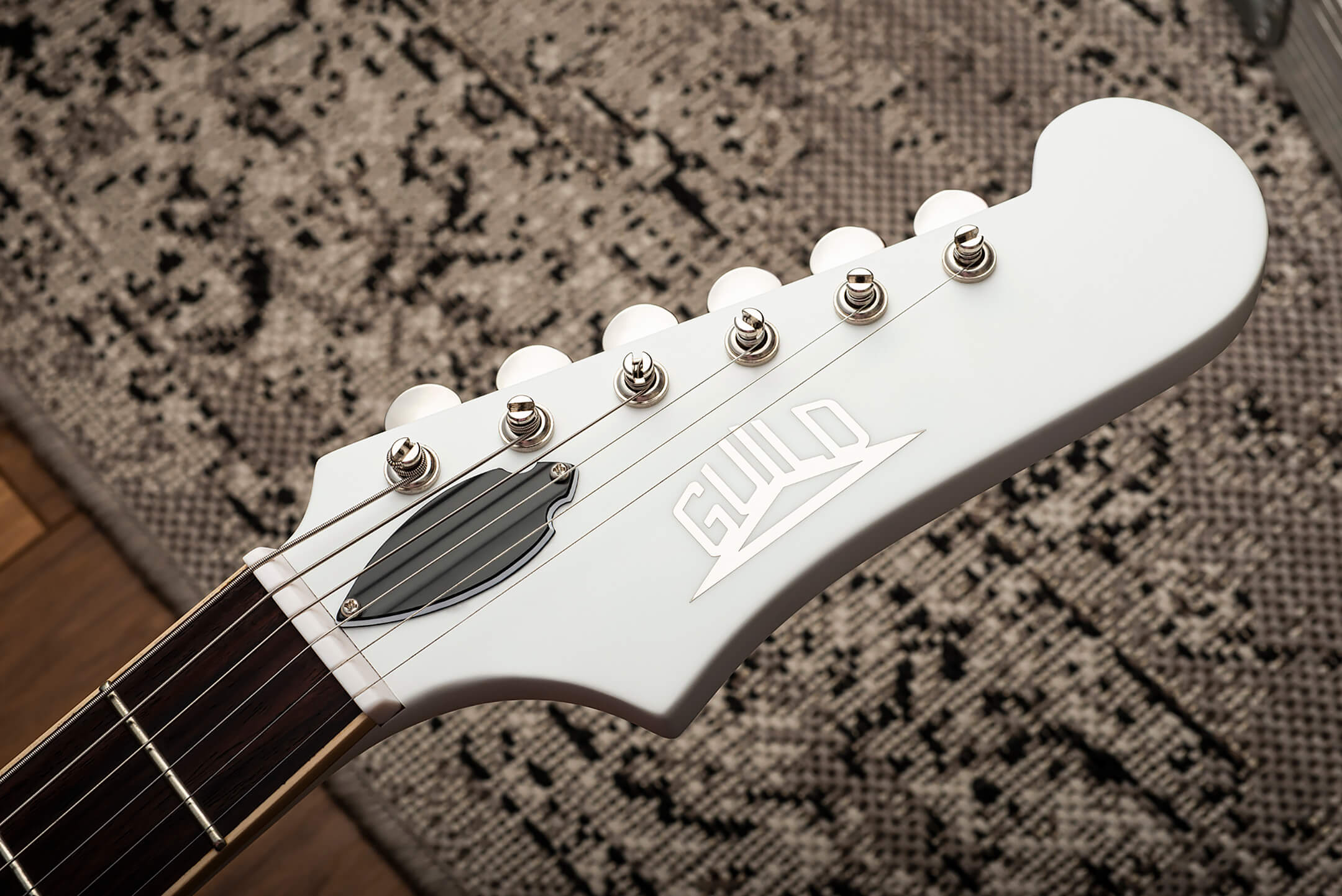
Big-boned it may be, but this Starfire’s mahogany centre-block is chambered and its tailpiece lightweight aluminium, so it’s unlikely you’ll find the guitar’s weight to be a drag factor. It balances superbly on a strap, too, and hangs in a very natural playing position. With its arched laminated-maple top and back with ivory ABS binding and two-ply purfling, the construction is broadly 335-like and therefore there’s no reason to expect a shortage of sustain. In fact, the centre-block-anchored bridge, screwed down tension-bar-equipped tailpiece and unimpeded string-path behind the nut combine to offer sustain and stability in abundance. But more on that shortly.
“THE JET90 OOZES ROCK ’N’ ROLL AND, FOR JUST £599 AND WITH THE GRAND OLD GUILD NAME ON ITS ELEGANT HEADSTOCK, IT’S ALMOST IMPOSSIBLE TO ARGUE WITH”
The Indian rosewood fingerboard is also bound in ivory ABS (that’s acrylonitrile butadiene styrene, to its friends; a thermoplastic polymer which, in addition to beautifying guitars, is currently finding favour in the 3D printing world) with 5mm pearloid dots providing a understated counterpoint to the visual flourishes elsewhere. These include the stepped Art Deco pickguard with its retro logo, G-logo mirror knobs and the old-school indicator pins around the six-position rotary pickup selector switch.
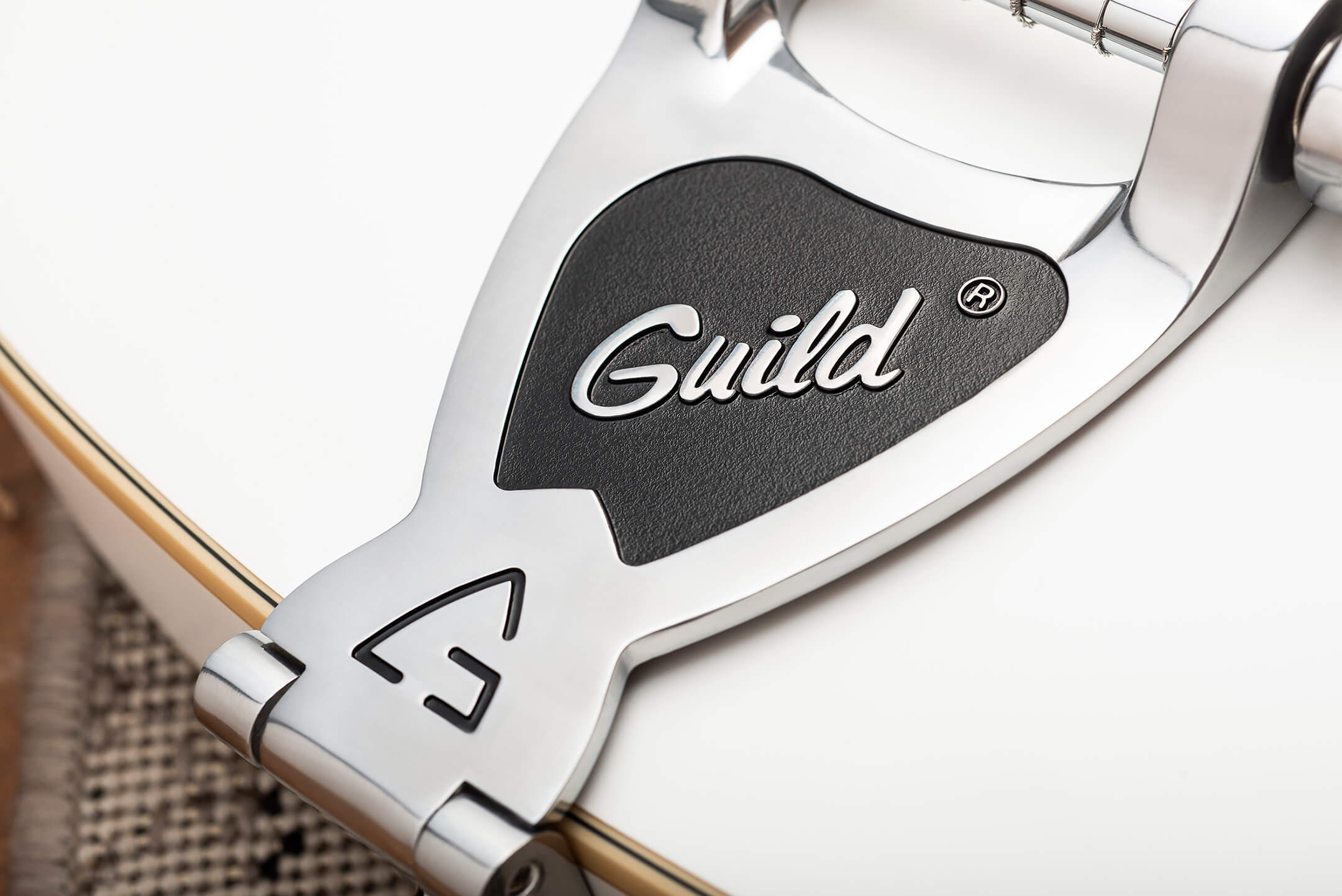
Though Newark St. instruments are made in South Korea, Indonesia and China at the behest of Guild’s California-based owners Córdoba Music Group, the collection itself is named after the location of Guild’s former Hoboken, New Jersey factory at which many of its vintage models were manufactured before the company was sold to the Avnet Corporation in 1965. In 1966, Guild operations were relocated to Rhode Island, where they remained until the facility was shut down by then-owners Fender in 2001.
“EVEN BEFORE YOU PLUG IN, THE LOUD ACOUSTIC VOICE AND SHIFTING HARMONICS PROMISE PLENTY OF FIREWORKS”
The aforementioned Franz P-90s offer another link to the first boom era of electric guitar production. Original Franz pickups were manufactured in Astoria, Queens and featured on many of Guild’s 1950s models. Under the hood, the modern repros on our review guitar certainly aren’t off-the-peg units and, though they are similar, they sport some notable anatomical differences to Gibson-style P-90s.
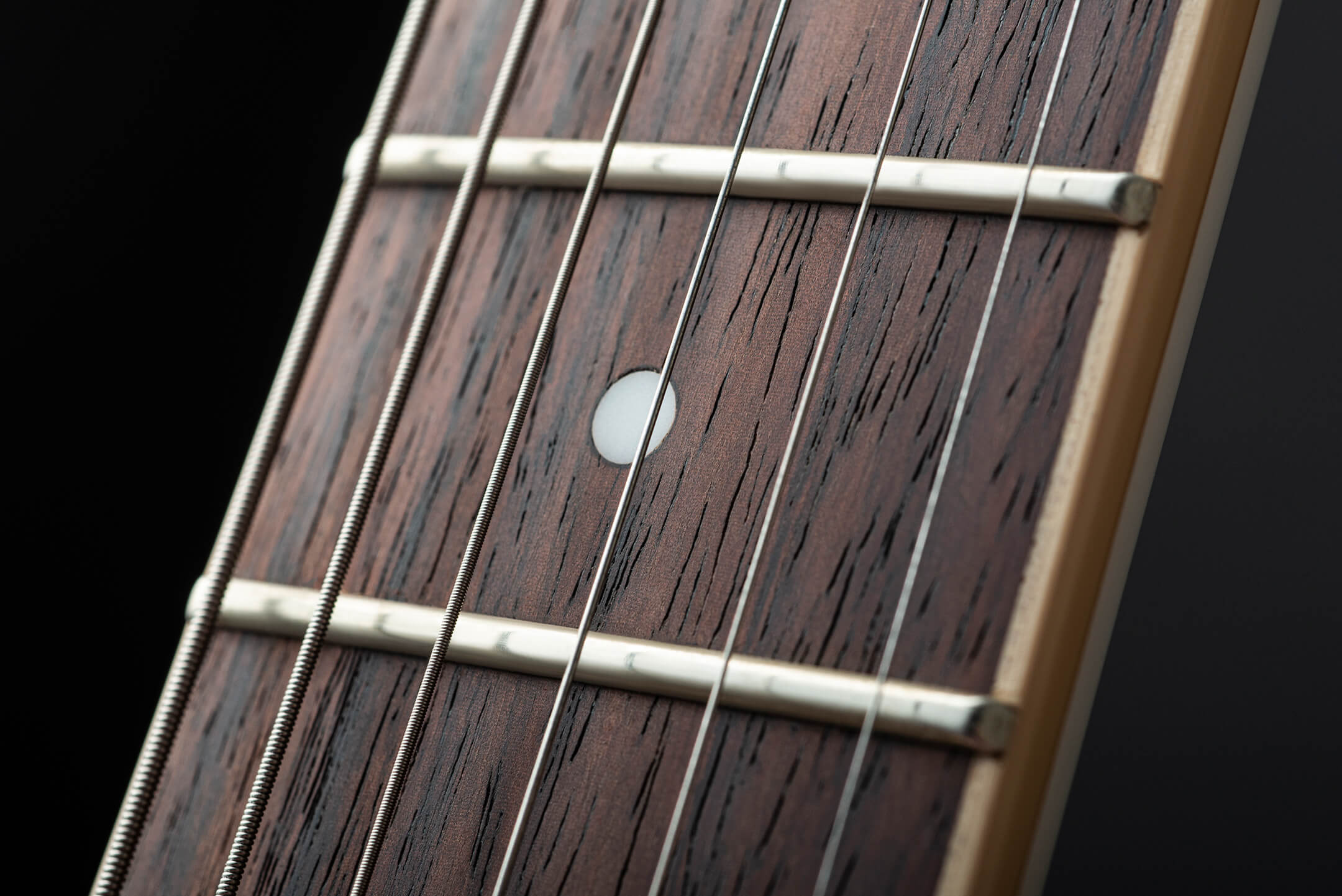
Undo the single centre-screw to remove one of the pickup covers and you’ll see that the corners of the top and bottom of the bobbins have been removed. This was originally done to avoid snagging when winding. The pickups are anchored to the body via a screw in each corner of the base plate, and the plate itself is folded, with a lip on each long side helping to hold a pair of bar magnets in place. Scope for pickup-height adjustment is limited but thanks to the foam pad beneath each unit, there is some room for manoeuvre, at least. Happily, plugging in reveals that the balance between all three pickups was set optimally before this guitar left the factory.

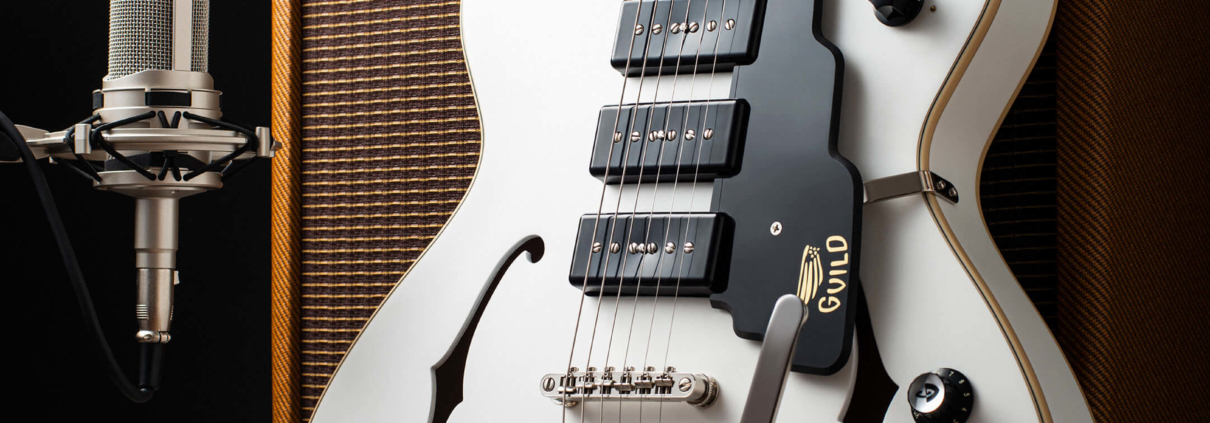

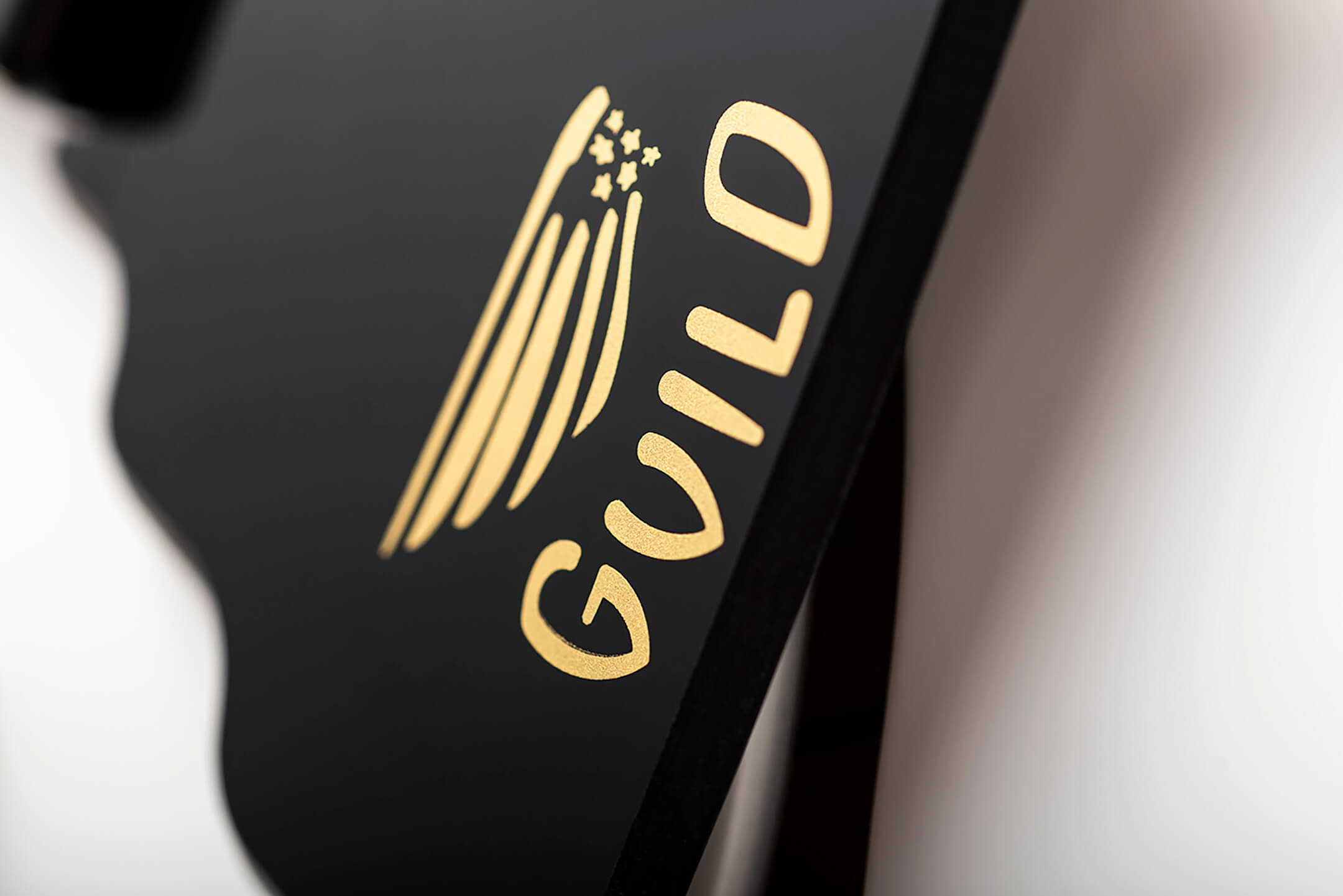
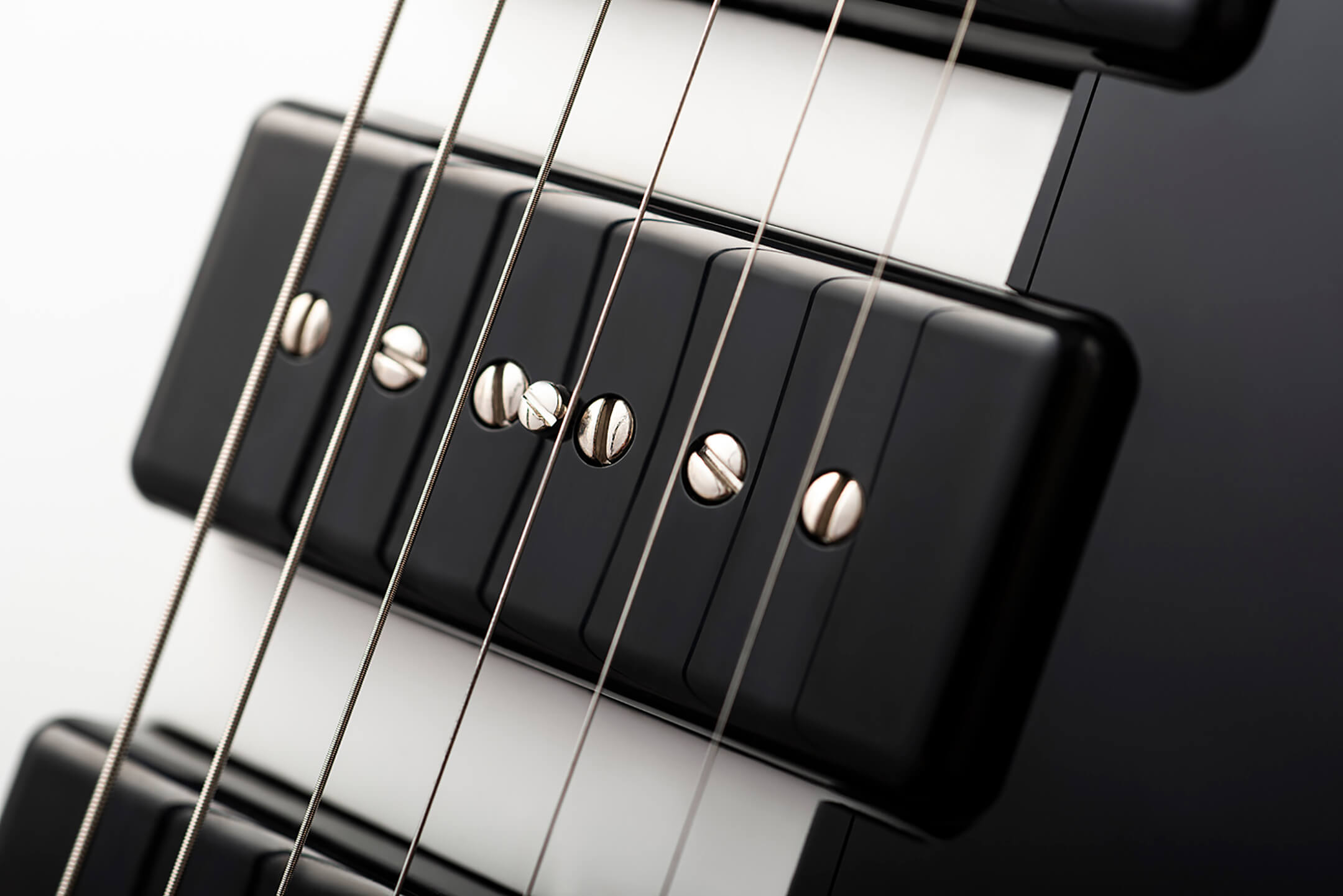

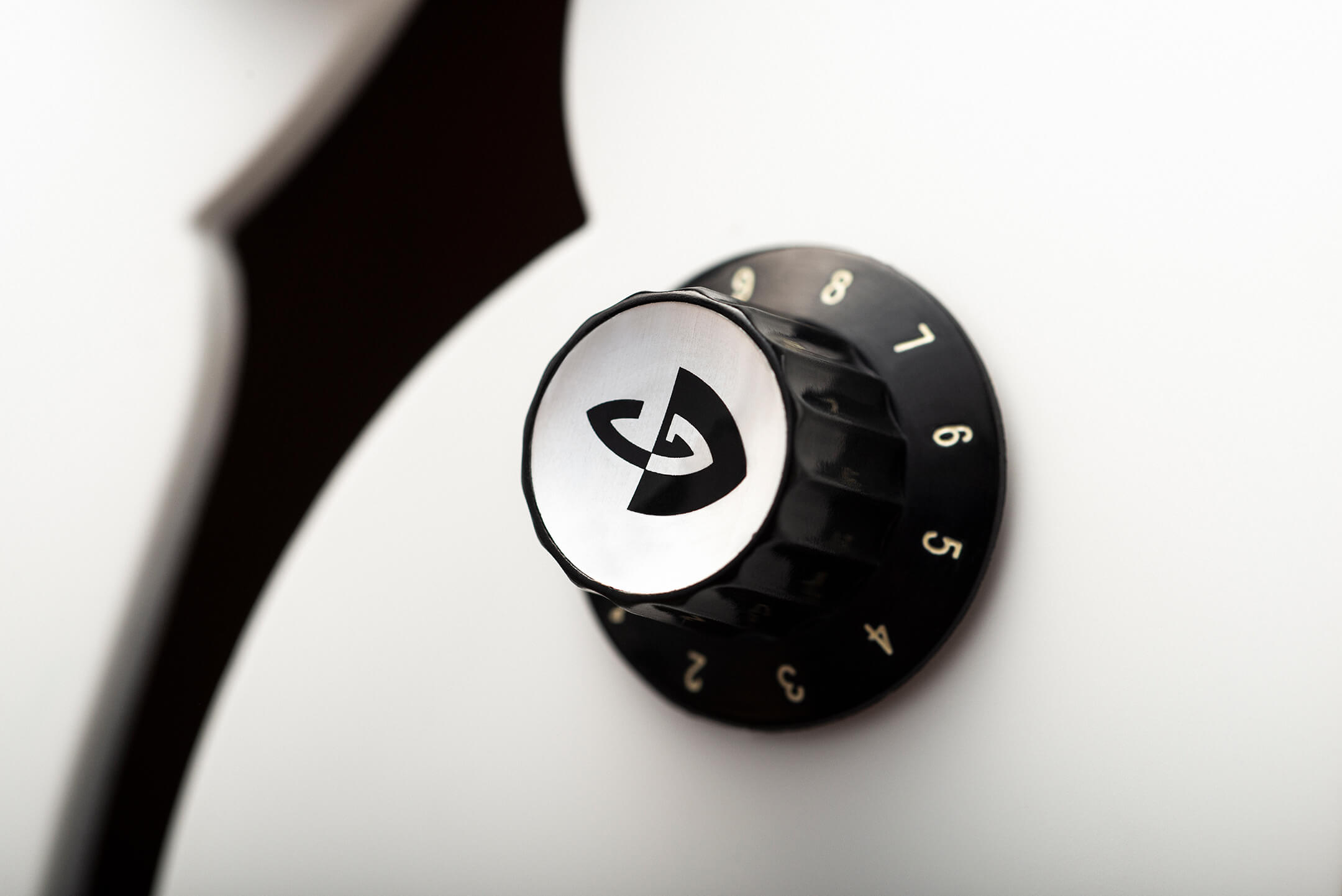

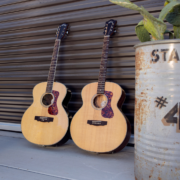


Leave a Reply
Want to join the discussion?Feel free to contribute!